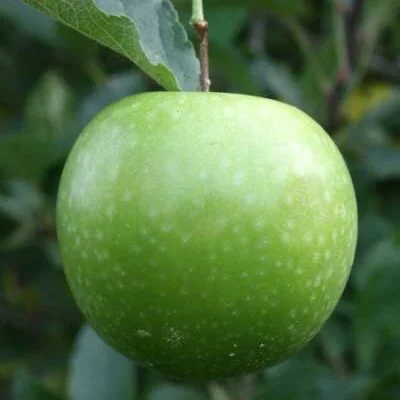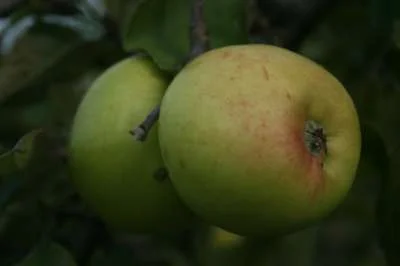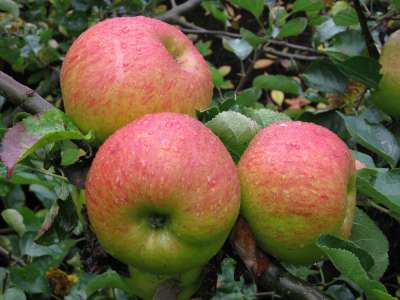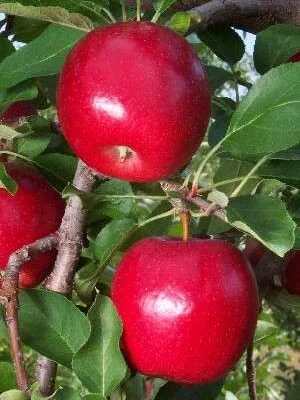Your basket is currently empty!
Rejuvenating old trees
At some time or other many of us inherit very old, gnarled, unproductive apple trees that simply don’t yield very well any more and may appear as if they are on their last legs. You might assume such trees are passed it but they may surprise you with an inner desire to rehabilitate themselves, with some encouragement from you. It is often quite possible to give them a new lease of life but you need to go about it the right way.
Take it slowly – this isn’t a task that can be completed in an enthusiastic fervour of activity over a week or so. It should be completed gradually over 3 or 4 years. Hard pruning all at once may produce a forest of sappy new growth that will quickly become congested, diseased and won’t be up to cropping. The first year you should concentrate solely on complete removal of any main branches that are identified as diseased or badly damaged. With larger cuts it is a good idea to paint them immediately afterward with a wound sealant such as arbrex. This tops the cut bleeding too much and also prevents disease from entering.
The following two to three years can be spent gradually removing unwanted growth with the aim of opening the tree out a bit. The tree will now naturally start producing new growth from dormant buds which you can then encourage or remove according to it’s suitability. When it has matured these new growths will give you worth whole yields once again.
It is of course also necessary to give your old apple trees encouragement with feed – as described previously – and also barrowfulls of compost and or manure to maintain moisture and improve the texture of the soil. This can where possible be lightly raked into the ground to aid incorporation.
Pests & Diseases
These are the diseases UK gardens encounter the most frequently. There are always a few gremlins ready and waiting to come along and spoil the party, it pays to be prepared to knock them out before they truly take a hold.
Apple tree diseases
Scab
Is the fungal disease most likely to be encountered and it can affect the leaves and the fruit. It is fairly widespread across the country, although more prevalent in wet seasons or more humid parts of the country. Some varieties will be more susceptible than others. It can be identified by the presence of brown-black ‘scabs’ and lesions on the leaves and the fruits. It can be controlled by an application of a broad-spectrum fungicide recommended for use on fruit trees. Often it is only treated after it has appeared but for the most effective control you start spraying as a matter of course, and this should start early, soon after the leaves have started to expand in late Spring.
Mildew
Particularly powdery mildew, effects new growths and is easily identifiable by the silvery dusting on the new leaves. It can cause the blossoms to fall before they have set. It is more likely to be a problem in warmer drier seasons but it is seen at some point every year. Badly infected shoots can be snipped off and burnt as they probably won’t come clean again that season. A course of fungicidal spray will normally knock it on the head and again it is better to start early rather than waiting until it has appeared.Beware the new growths of some apple tree varieties which have a furry, silvery look. This is NOT mildew, although it can have that appearance to the untrained eye. Cooking apples in particular often have whitish looking new shoots and a thick furry appearance beneath the leaves, but some other dessert varieties also have this characteristic – and it’s perfectly normal.
Canker
Sunken patches and flaking bark will cause die-back and death of the branch. The branch and growth affected should be removed completely and burnt. But if it appears on the main trunk the tree may suffer a lingering decline. Most effective sprays have been withdrawn. Re-plant with varieties less susceptible and avoid areas that have poor air circulation and poor drainage as this encourages the disease.It is quite prevalent in all area’s of the country and even in gardens that have not grown fruit trees before the spores can arrive and colonise quite quickly.
Bitter Pit
This is a physiological disorder caused by a lack of calcium in the soil. Calcium can be given as a supplement but often the problem arises because of the trees’ inability to take up and absorb the calcium. For this reason heavy watering during dry spells can help, as will a good mulch. Often cookers seem worse affected than eaters, but many varieties can be affected. Fruits may appear ‘good’ on the outside but when cut the flesh is riddled with small brown speckles and spots and may have a characteristic bitter taste.
Apple tree pests and bugs
Coddling Moth
Maggoty apples, usually the earlier varieties, are usually identified as Coddling Moth. The small adult moths lay there eggs on developing fruit in May and June and the tiny larvae burrow into the developing fruites and feed inside. They then emerge to pupate in the bark of the tree and overwinter there before emerging in late Spring to continue the cycle all over again. A winter wash can help destroy the pupae and prevent a re-occurrence. Pheromone traps can help capture adult moths in the Spring.
Aphids
You usually first notice the presence of aphids/greenfly by distorted and yellow new growths. Closer inspection will usually reveal a thick cluster of these tiny insects underneath the leaves and on the stems. They can be controlled by so called ‘bug gun’ systemic insecticide, biological controls and even soapy water. Sometimes if the problem is not noticed soon enough the shoots can be so badly affected they should be cut off and destroyed. It is important to control these insects not only because they debilitate and weaken the tree, they also spread virus and disease.
Woolly aphids
Are more difficult to control and usually contact insecticides do not touch them. Try to use only a systemic insecticide, or biological control. It is also said that painting methylated spirits onto affected shoots can deter them. A good winter wash can help eradicate overwintering populations.
Capsid Buds
Will manifest themselves by tattered leaves and lumpy malformed fruit as the adults feed not only on foliage but also young immature fruit. They can be controlled by insecticides. Malformed lumpy fruits can also be the result by frosts or hailstones present when the fruits are young.
Growing apple trees in pots
Our article offers all the information you could wish for and aims to inspire you to grow apple trees in pots – a perfectly doable and worthwhile occupation. As a resume make sure you select dwarfing or miniature trees – even in very large containers, vigorous apple trees are seldom satisfactory couped in a container. But genuinely dwarfing stocks such as ideally M27, or secondly M9, actually seem to like being in pots and are encouraged to fruit early in life. Never opt for a container size less than 20” and always use loam based potting compost in preference to coir or general purpose.Most cultivation and pruning techniques are the same as for cultivation in the open ground. Columnar trees also do very well in pots.In all cases you will find ripening times are often a little advanced. I hope you have been inspired and educated in this guide to growing apples. Any comments or questions do contact me!
When to plant apple trees
The dormant season as bare root stock from October-April is often considered best, and is easier because less watering is involved. But planting outside of the traditional season is increasingly popular and you can get them in as pot grown stock during the summer too. But regular heavy watering is essential until they are established, which can take some weeks.






